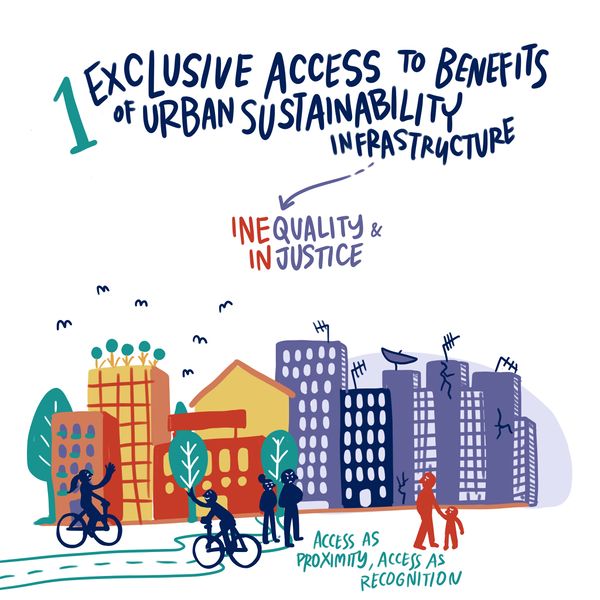Caring
Discover 4 keys to make cities caring:
#Solidarity - Solidarity is fairness in action
A sustainable and just city is built on solidarity. It fosters the sharing of abundance in time and resources through equitable redistributive mechanisms and sharing programs. Bottom-up social and affordable housing programs are supported and strengthened through robust regulation. Shared forms of housing and care-oriented ways of living and working are encouraged and supported. Sustainable and affordable food networks are woven together to support local farmers and offer high-quality sustenance for residents.
Related keys: #Participation #CivilSociety #Economy (LINK TO THEIR CLUSTER PAGES)
What approaches can activate this key?
What governance arrangements enable this key?
What drivers of injustice does this key address?
Extra insights from UrbanA Community
Inspirational example
Avenues for action
You might be wondering, what everyday actions can I take to put all this theory into practice? Take a look at the avenues for action, below, for some practical guidance.
#Accessibility - Green is for everyone
Sustainable and just cities respond to the ecological crisis by developing greener infrastructure and services that are accessible to all urban dwellers. In these cities, a person’s disability, gender, class, race, age, ethnicity, sexuality, religion, to name just a few, are not barriers. Everyone has equal access to urban amenities, green infrastructure, mobility, job opportunities, housing, food and energy. Accessibility is not only a physical issue, such as access to public space, it is also an economic issue (e.g. affordability), a knowledge one (e.g. language used), a social one (e.g. homelessness) and a political one (e.g. transparency in decision-making).
Related keys: #Economy #Power #Nature (LINK TO THEIR CLUSTER PAGES)
What approaches can activate this key?
What governance arrangements enable this key?
What drivers of injustice does this key address?
Extra insights from UrbanA Community
Inspirational example
Avenues for action
You might be wondering, what everyday actions can I take to put all this theory into practice? Take a look at the avenues for action, below, for some practical guidance.
#Diversity - Inclusion starts by embracing diversity
Sustainable and just cities recognize and acknowledge diversity, analysing the real and diverse needs of all residents through an intersectional approach. Intersectionality helps city-makers understand combined inequalities based on the different identities and characteristics of a person or group. In a sustainable and just city, for example, a policy working to make greener areas safer for women examines not only gender-based inequalities, but also the influences of race and class. Such analysis is the basis for local policy solutions that lead to inclusive, people-centred and carbon-neutral cities.
Related keys: #Participation #Solidarity #Power (LINK TO THEIR CLUSTER PAGES)
What approaches can activate this key?
What governance arrangements enable this key?
What drivers of injustice does this key address?
Extra insights from UrbanA Community
Inspirational example
Avenues for action
You might be wondering, what everyday actions can I take to put all this theory into practice? Take a look at the avenues for action, below, for some practical guidance.
#Nature - Nature creates living and breathing cities
In sustainable and just cities, nature-based planning is central. Rewilding initiatives, permaculture, biodiversity and continuously productive urban landscapes intersect with social and economic initiatives. They are designed with and around blue and green infrastructure, and aim for enhanced resilience. Urban nature provides shelter to flora and fauna, which, in turn, people use and enjoy. Natural infrastructure helps reduce hazards like urban heat islands, and this infrastructure is implemented and maintained in a way that supports the most vulnerable neighbourhoods. Harmful and polluting industries are scaled down and the use of cars is significantly reduced in order to allow human and non-human life to thrive.
Related keys: #Adaptation #Accessibility #Regional (LINK TO THEIR CLUSTER PAGES)
What approaches can activate this key?
What governance arrangements enable this key?
What drivers of injustice does this key address?
Extra insights from UrbanA Community
Inspirational example
Avenues for action
You might be wondering, what everyday actions can I take to put all this theory into practice? Take a look at the avenues for action, below, for some practical guidance.
